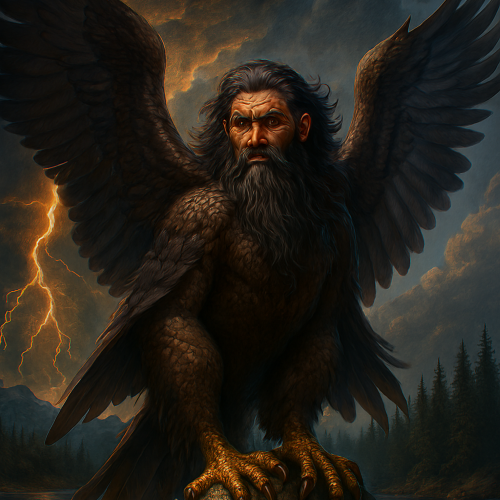Washoe Mythology
Lakota mythology is a central part of the cultural and spiritual heritage of the Lakota people, one of the seven council fires of the Oceti Sakowin, or Great Sioux Nation. Rooted in oral traditions, Lakota myths explain the origins of the world, the role of spirits, and the sacred relationship between humans and the natural environment. These stories were traditionally told around fires, during ceremonies, and in community gatherings, carrying wisdom that reinforced values of respect, bravery, humility, and balance. For the Lakota, mythology was not a separate body of tales but a living guide that shaped daily life, ceremonies, and the people’s relationship with the land and the cosmos.
Among the most important stories in Lakota mythology is the emergence of the people from Wind Cave in the Black Hills, a sacred landscape central to Lakota identity. The Black Hills, or Paha Sapa, are seen as the heart of the world, imbued with spiritual power and home to many sacred sites. The Lakota believe that the spirits and natural forces of the Black Hills connect them directly to creation. The mythology tied to these landscapes emphasizes the sacredness of place and the responsibility to live in harmony with the earth, animals, and sky.
Another central figure in Lakota mythology is White Buffalo Calf Woman, a sacred messenger who brought the people the seven sacred ceremonies, including the Sun Dance and the vision quest. Through these teachings, the Lakota were given a way to live in balance and maintain spiritual connection. The myths also speak of Wakȟáŋ Tȟáŋka, the Great Spirit, and other spiritual beings who embody natural forces like thunder, wind, and water. Trickster figures such as Iktomi, the spider, appear in stories to teach lessons through humor and mischief, showing the consequences of pride, greed, or foolishness. Together, these stories reflect both the sacred order of the universe and the realities of human life.
Today, Lakota mythology continues to hold deep cultural importance. Ceremonies like the Sun Dance, sweat lodge, and vision quest remain powerful expressions of these sacred teachings, connecting communities with their ancestors and with the spiritual world. Lakota elders, educators, and cultural leaders ensure that these stories are preserved and passed on to younger generations, while writers, artists, and filmmakers bring them to wider audiences. For the Lakota people, mythology is not simply about the past but a living, evolving tradition that maintains cultural identity and spiritual strength. Exploring Lakota mythology offers profound insights into a worldview that sees all of life as sacred, interconnected, and deserving of respect.


